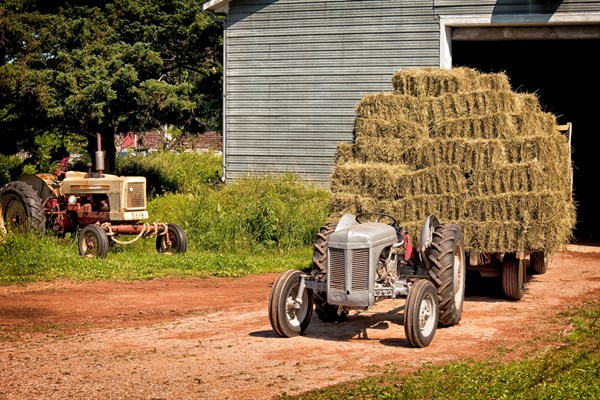 Credit: Thinkstock Don’t expect a small (or old) tractor to be able to perform the duties you need a mid-size tractor to accomplish.
Credit: Thinkstock Don’t expect a small (or old) tractor to be able to perform the duties you need a mid-size tractor to accomplish.Editor’s note: Most horse farm and stable owners use some type of labor-saving equipment or machinery to make management tasks easier. These labor-savors might range from a 4-wheeler to pull a hay cart or a small manure spreader, to a small tractor for powering a larger manure spreader or front-end loader, to a larger tractor for handling big round bales and agricultural chores. This month we are discussing several of these machines to help you better understand how you might get the most out of them, or to determine that you don’t need that specific equipment.
There are some tasks you cannot do with a small tractor. Moving hay in large packages requires larger equipment. “Even though small square bales are generally the most handy size for a horse farm, even some of the big farms have gone to the large square packages and had to think about how they were going to handle them,” said Bob Coleman, State Extension Specialist at the University of Kentucky. “Even if you can still find hay in small square bales, it’s almost impossible to find straw in small bales. Straw for bedding can be hard to find unless you buy big bales. Those are more efficient for the farmer to bale and haul off the field.”
With the cost of diesel fuel, the efficiency to bale it and haul it becomes very important for the farmer. “Even for the horse farm, to haul small bales and then to pay for the labor to stack them becomes an in issue,” noted Coleman. “The bigger packages are quicker, cheaper and simpler. Some of mid-size tractors are much better for this job.”
Trying to make your garden tractor (that’s been designed for mowing and small tasks) do some of these other things might be hard on the tractor and also unsafe. You might also need a mid-size tractor to run a no-till drill or some other piece of equipment, or pull a bush hog.
“I can’t imagine trying to mow a large pasture with a 40-inch deck on a little garden tractor, unless a person really needs to get away from things for a big block of time—and wants to put on earphones and music,” said Coleman. “If that’s the case, then that little tractor is a therapy tractor and not a working tractor! With all pieces of equipment, it really comes down to what you need, and what you are going to do with it. Will it make my life easier? Will it improve my ability to care for my horses easier? If it saves me time, maybe I will be able to do what I need to do.”
Perhaps you look at your neighbor with a nice new brand X tractor and think maybe that’s what you need. “In this situation, it first pays to go ask them how they like it, how does it work, what does it do for them?” stated Coleman. “It pays to do a little homework to see if something is actually right for you and for what you need. It’s similar to seeing a trainer at a horse show using a new kind of bit that you’ve never seen. Don’t just go buy one—go ask them how it works and what it’s done for that horse. Go look at different farms that are using various sizes and kinds of tractors and see if it is really what you need, before you buy one. Most people will share that information with you.”


